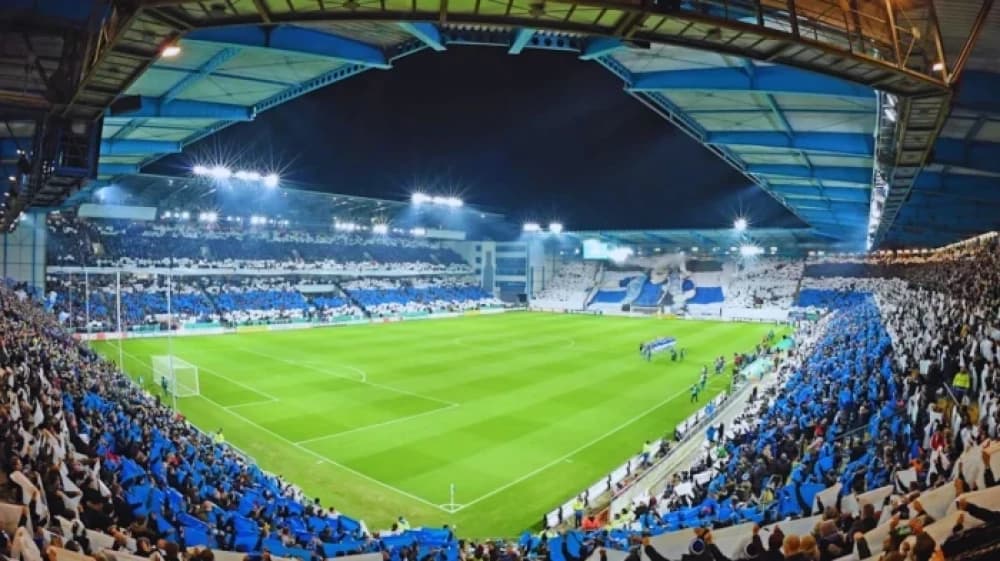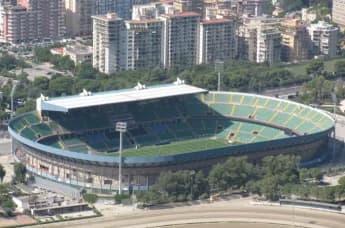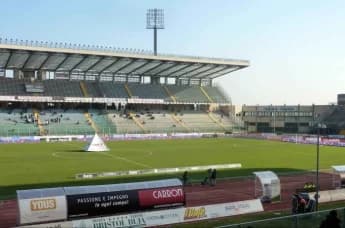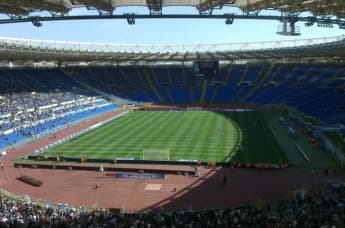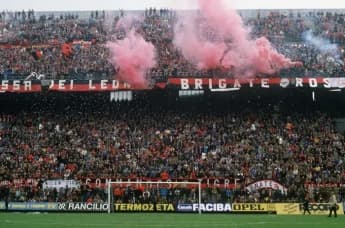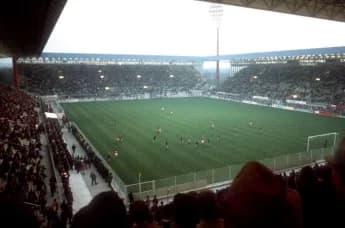From humble pastures to a modern football fortress, SchücoArena stands as a symbol of Arminia Bielefeld’s enduring spirit and passionate fan culture.
Introduction
Nestled in the heart of Bielefeld, SchucoArena—affectionately known as "Die Alm"—is more than just a football stadium; it is a living testament to the resilience and passion of Arminia Bielefeld and its supporters. With a capacity of 27,332, this historic ground has witnessed dramatic promotions, heartbreaking relegations, and unforgettable moments that define German football.
Originally named Bielefelder Alm (a nod to its rough, pasture-like pitch in the early days), the stadium has evolved into a modern arena while retaining its traditional charm. This article explores its rich history, architectural evolution, legendary matches, and the unwavering fan culture that makes SchücoArena one of Germany’s most atmospheric venues.
A Pasture Turned Fortress: The Early Years (1926–1970)
From Farmland to Football Ground
Before SchücoArena existed, Arminia Bielefeld played at various makeshift grounds, including Pottenau Sportplatz, where fans watched from railway embankments. In 1926, the club secured a lease on farmland owned by a local named Lohmann, transforming it into their new home.
The stadium’s nickname, "Die Alm" (meaning "pasture"), has disputed origins:
-
Some say it was due to the uneven, muddy pitch resembling grazing land.
-
Others claim cattle still roamed the field when matches weren’t being played.
-
A popular legend attributes it to a fan remarking, "This looks like a pasture!"
Primitive Beginnings
-
No changing rooms—players showered at a nearby pub (Schutze).
-
A natural grass mound served as the first "stand," holding 20,000 spectators.
-
Floodlights? None. Grass? Patchy. Yet, the Alm became a footballing home.
Post-War Upgrades
After WWII, the city modernized the stadium:
-
Concrete terracing replaced the grassy slopes.
-
A proper grass pitch was installed.
-
By the 1960s, Armenia outgrew the Alm but lacked funds for major upgrades.
Bundesliga Dreams: Expansion & Glory (1970–2000)
First Bundesliga Promotion (1970)
Arminia’s rise to the Bundesliga forced rapid renovations:
-
New stands were built, increasing capacity to 30,000+.
-
Floodlights debuted in a 1-1 draw vs. Hertha BSC (1970).
The Golden 1970s & 80s
-
1978: A 3-2 win over Schalke in front of 34,882 fans marked a new era.
-
1982-83: Arminia’s biggest Bundesliga win (6-0 vs. Frankfurt) at the Alm.
-
1996-97: A shock 1-0 victory over Bayern Munich—one of the stadium’s greatest upsets.
Financial Struggles & Rebuilding
The 1990s brought turbulence:
-
Near-bankruptcy forced partial stadium demolition.
-
1999–2007: Phased reconstruction, including the East Stand’s solar-panel roof.
Modern Era: SchücoArena & Armenia’s Revival (2000–Present)
Corporate Sponsorship & Name Change
In 2004, local company Schüco secured naming rights and rebranded the stadium SchücoArena. Fans still call it "Die Alm" out of tradition.
Key Matches & Moments
-
2008: Arminia’s last Bundesliga home game before relegation (vs. Dortmund).
-
2014-15: A fairytale DFB-Pokal run, including a penalty shootout win vs. Gladbach.
-
2019-20: Promotion back to the Bundesliga—celebrated outside due to COVID-19.
Fan Culture & Atmosphere
-
Nordtribüne (North Stand): The heartbeat of the stadium, where ultras create an intimidating wall of noise.
-
"Blau-Weiß" Chants: Fans sing club anthems with unmatched passion.
-
Derby Days: Fixtures vs. Paderborn, Bochum, and Hannover are fiercely contested.
Architectural Highlights
-
East Stand’s Solar Roof: It generates electricity for the club.
-
Compact Design: The fans are closer to the pitch than in modern arenas.
-
Mixed Seating & Standing: The Nordkurve retains standing terraces for an authentic feel.
Legacy & Future
Records & Milestones
-
Highest Attendance: 34,932 (1970s, pre-renovation).
-
Club Legend Fabian Klos: All-time top scorer at the arena.
-
Longest Unbeaten Streak: 2019-20 promotion season.
Financial Challenges & Ownership
-
2018: The stadium was sold to 3BO/STBO GmbH (backed by Dr. Oetker, Gauselmann) to stabilize finances.
-
Armenia retains naming rights & matchday revenue.
What’s Next?
-
Potential further upgrades to hospitality and fan zones.
-
Sustaining Bundesliga status remains the priority.
Conclusion: More Than Just a Stadium
SchücoArena is a monument to loyalty, where generations have cheered, cried, and celebrated. From its pasture roots to its modern identity, the Alm remains the soul of Arminia Bielefeld. As the club marches forward, one thing is certain: no matter the name, this will always be "Die Alm" to the fans.
Introduction
Nestled in the heart of Bielefeld, SchucoArena—affectionately known as "Die Alm"—is more than just a football stadium; it is a living testament to the resilience and passion of Arminia Bielefeld and its supporters. With a capacity of 27,332, this historic ground has witnessed dramatic promotions, heartbreaking relegations, and unforgettable moments that define German football.
Originally named Bielefelder Alm (a nod to its rough, pasture-like pitch in the early days), the stadium has evolved into a modern arena while retaining its traditional charm. This article explores its rich history, architectural evolution, legendary matches, and the unwavering fan culture that makes SchücoArena one of Germany’s most atmospheric venues.
A Pasture Turned Fortress: The Early Years (1926–1970)
From Farmland to Football Ground
Before SchücoArena existed, Arminia Bielefeld played at various makeshift grounds, including Pottenau Sportplatz, where fans watched from railway embankments. In 1926, the club secured a lease on farmland owned by a local named Lohmann, transforming it into their new home.
The stadium’s nickname, "Die Alm" (meaning "pasture"), has disputed origins:
-
Some say it was due to the uneven, muddy pitch resembling grazing land.
-
Others claim cattle still roamed the field when matches weren’t being played.
-
A popular legend attributes it to a fan remarking, "This looks like a pasture!"
Primitive Beginnings
-
No changing rooms—players showered at a nearby pub (Schutze).
-
A natural grass mound served as the first "stand," holding 20,000 spectators.
-
Floodlights? None. Grass? Patchy. Yet, the Alm became a footballing home.
Post-War Upgrades
After WWII, the city modernized the stadium:
-
Concrete terracing replaced the grassy slopes.
-
A proper grass pitch was installed.
-
By the 1960s, Armenia outgrew the Alm but lacked funds for major upgrades.
Bundesliga Dreams: Expansion & Glory (1970–2000)
First Bundesliga Promotion (1970)
Arminia’s rise to the Bundesliga forced rapid renovations:
-
New stands were built, increasing capacity to 30,000+.
-
Floodlights debuted in a 1-1 draw vs. Hertha BSC (1970).
The Golden 1970s & 80s
-
1978: A 3-2 win over Schalke in front of 34,882 fans marked a new era.
-
1982-83: Arminia’s biggest Bundesliga win (6-0 vs. Frankfurt) at the Alm.
-
1996-97: A shock 1-0 victory over Bayern Munich—one of the stadium’s greatest upsets.
Financial Struggles & Rebuilding
The 1990s brought turbulence:
-
Near-bankruptcy forced partial stadium demolition.
-
1999–2007: Phased reconstruction, including the East Stand’s solar-panel roof.
Modern Era: SchücoArena & Armenia’s Revival (2000–Present)
Corporate Sponsorship & Name Change
In 2004, local company Schüco secured naming rights and rebranded the stadium SchücoArena. Fans still call it "Die Alm" out of tradition.
Key Matches & Moments
-
2008: Arminia’s last Bundesliga home game before relegation (vs. Dortmund).
-
2014-15: A fairytale DFB-Pokal run, including a penalty shootout win vs. Gladbach.
-
2019-20: Promotion back to the Bundesliga—celebrated outside due to COVID-19.
Fan Culture & Atmosphere
-
Nordtribüne (North Stand): The heartbeat of the stadium, where ultras create an intimidating wall of noise.
-
"Blau-Weiß" Chants: Fans sing club anthems with unmatched passion.
-
Derby Days: Fixtures vs. Paderborn, Bochum, and Hannover are fiercely contested.
Architectural Highlights
-
East Stand’s Solar Roof: It generates electricity for the club.
-
Compact Design: The fans are closer to the pitch than in modern arenas.
-
Mixed Seating & Standing: The Nordkurve retains standing terraces for an authentic feel.
Legacy & Future
Records & Milestones
-
Highest Attendance: 34,932 (1970s, pre-renovation).
-
Club Legend Fabian Klos: All-time top scorer at the arena.
-
Longest Unbeaten Streak: 2019-20 promotion season.
Financial Challenges & Ownership
-
2018: The stadium was sold to 3BO/STBO GmbH (backed by Dr. Oetker, Gauselmann) to stabilize finances.
-
Armenia retains naming rights & matchday revenue.
What’s Next?
-
Potential further upgrades to hospitality and fan zones.
-
Sustaining Bundesliga status remains the priority.
Conclusion: More Than Just a Stadium
SchücoArena is a monument to loyalty, where generations have cheered, cried, and celebrated. From its pasture roots to its modern identity, the Alm remains the soul of Arminia Bielefeld. As the club marches forward, one thing is certain: no matter the name, this will always be "Die Alm" to the fans.

